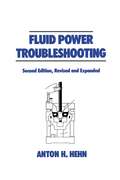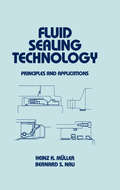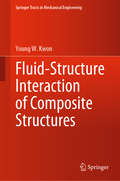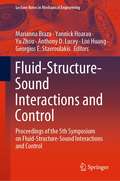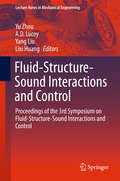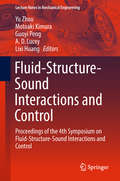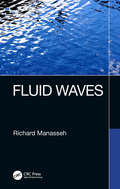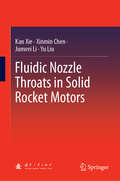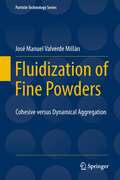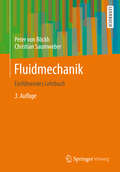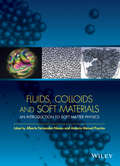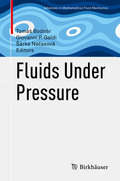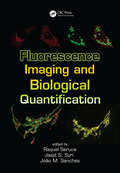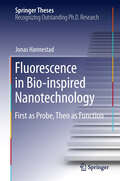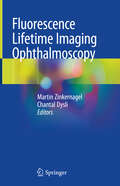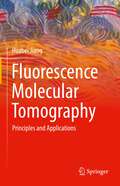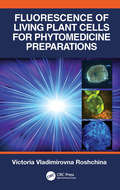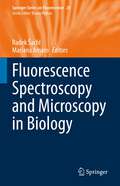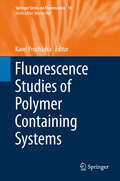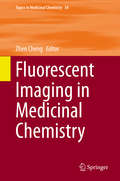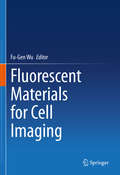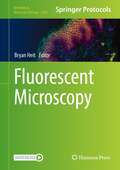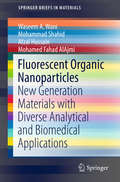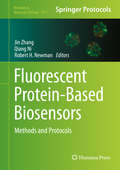- Table View
- List View
Fluid Power Troubleshooting, Second Edition,
by Anton HehnPresents practical methods for detecting, diagnosing and correcting fluid power problems within a system. The work details the design, maintenance, and troubleshooting of pneumatic, hydraulic and electrical systems and components. This second edition stresses: developments in understanding the complex interactions of components within a fluid power system; cartridge valve systems, proportional valve and servo-systems, and compressed air drying and filtering; noise reduction and other environmental concerns; and more.;This work should be of interest to mechanical, maintenance, manufacturing, system and machine design, hydraulic, pneumatic, industrial, chemical, electrical and electronics, lubrication, plastics processing, automotive, process control, and power system engineers; manufacturers of hydraulic and pneumatic machinery; systems maintenance personnel; and upper-level undergraduate and graduate students in these disciplines.
Fluid Sealing Technology: Principles and Applications
by Heinz K Muller"Assists users, developers, researchers, and manufacturers in the design, selection, development, and application of seals and sealing systems for fluids."
Fluid-Structure Interaction of Composite Structures (Springer Tracts in Mechanical Engineering)
by Young W. KwonThis is the first book presenting dynamic responses and failure of polymer composite structures as they interact with internal and/or external fluid media. It summarizes authoritative research carried out by the author in the past decade on various aspects of Fluid-Structure Interaction (FSI) to present important effects of FSI on composite structures. The topics include impact loading on composite structures with air-back, water-back, or containing water; FSI effects on frequencies, mode shapes, and modal curvatures; cyclic loading for fatigue failure with FSI; coupling of independent composite structures by fluid media; and moving composite structures in water. Numerical techniques for FSI are also presented. Research was conducted both experimentally and numerically to complement each other. The book offers a timely, comprehensive information to fluid-structure interaction of composite structures for students, researchers or practicing engineers.
Fluid-Structure-Sound Interactions and Control: Proceedings of the 5th Symposium on Fluid-Structure-Sound Interactions and Control (Lecture Notes in Mechanical Engineering)
by Marianna Braza Yannick Hoarau Yu Zhou Anthony D. Lucey Lixi Huang Georgios E. StavroulakisThis book contains a thorough and unique record of recent advances in the important scientific fields fluid–structure interaction, acoustics and control of priority interest in the academic community and also in an industrial context regarding new engineering designs. It updates advances in these fields by presenting state-of-the-art developments and achievements since the previous Book published by Springer in 2018 after the 4th FSSIC Symposium. This book is unique within the related literature investigating advances in these fields because it addresses them in a complementary way and thereby enhances cross-fertilization between them, whereas other books treat these fields separately.
Fluid-Structure-Sound Interactions and Control
by Lixi Huang Yang Liu A. D. Lucey Yu ZhouTheseproceedings primarily focus on advances in the theory, experiments, andnumerical simulations of turbulence in the contexts of flow-induced vibrationand noise, as well as their control. Fluid-related structural vibration andnoise problems are often encountered in many engineering fields, increasinglymaking them a cause for concern. The FSSIC conference, held on 5-9 July 2015 inPerth, featured prominent keynote speakers such as John Kim, Nigel Peake, SongFu and Colin Hansen, as well as talks on a broad range of topics: turbulence,fluid-structure interaction, fluid-related noise and the control/managementaspects of these research areas, many of which are clearly interdisciplinary innature. It provided a forum for academics, scientists and engineers working inall branches of Fluid-Structure-Sound Interactions and Control (FSSIC) toexchange and share the latest developments, ideas and advances, bringing themtogether researchers from East and West to push forward the frontiers of FSSIC,ensuring that the proceedings will be of interest to a broad engineeringcommunity.
Fluid-Structure-Sound Interactions and Control: Proceedings Of The 2nd Symposium On Fluid-structure-sound Interactions And Control (Lecture Notes In Mechanical Engineering)
by Lixi Huang A. D. Lucey Guoyi Peng Motoaki Kimura Yu ZhouThis book presents the proceedings of the Symposium on Fluid-Structure-Sound Interactions and Control (FSSIC), (held in Tokyo on Aug. 21-24, 2017), which largely focused on advances in the theory, experiments on, and numerical simulation of turbulence in the contexts of flow-induced vibration, noise and their control. This includes several practical areas of application, such as the aerodynamics of road and space vehicles, marine and civil engineering, nuclear reactors and biomedical science, etc. Uniquely, these proceedings integrate acoustics with the study of flow-induced vibration, which is not a common practice but can be extremely beneficial to understanding, simulating and controlling vibration. The symposium provides a vital forum where academics, scientists and engineers working in all related branches can exchange and share their latest findings, ideas and innovations – bringing together researchers from both east and west to chart the frontiers of FSSIC.
Fluid-Structure-Sound Interactions and Control
by Yu Zhou Yang Liu Lixi Huang Dewey H. HodgesWith rapid economic and industrial development in China, India and elsewhere, fluid-related structural vibration and noise problems are widely encountered in many fields, just as they are in the more developed parts of the world, causing increasingly grievous concerns. Turbulence clearly has a significant impact on many such problems. On the other hand, new opportunities are emerging with the advent of various new technologies, such as signal processing, flow visualization and diagnostics, new functional materials, sensors and actuators, etc. These have revitalized interdisciplinary research activities, and it is in this context that the 2nd symposium on fluid-structure-sound interactions and control (FSSIC) was organized. Held in Hong Kong (May 20-21, 2013) and Macau (May 22-23, 2013), the meeting brought together scientists and engineers working in all related branches from both East and West and provided them with a forum to exchange and share the latest progress, ideas and advances and to chart the frontiers of FSSIC. The Proceedings of the 2nd Symposium on Fluid-Structure-Sound Interactions and Control largely focuses on advances in the theory, experimental research and numerical simulations of turbulence in the contexts of flow-induced vibration, noise and their control. This includes several practical areas for interaction, such as the aerodynamics of road and space vehicles, marine and civil engineering, nuclear reactors and biomedical science etc. One of the particular features of these proceedings is that it integrates acoustics with the study of flow-induced vibration, which is not a common practice but is scientifically very helpful in understanding, simulating and controlling vibration. This offers a broader view of the discipline from which readers will benefit greatly. These proceedings are intended for academics, research scientists, design engineers and graduate students in engineering fluid dynamics, acoustics, fluid and aerodynamics, vibration, dynamical systems and control etc. Yu Zhou is a professor in Institute for Turbulence-Noise-Vibration Interaction and Control at Harbin Institute of Technology. Yang Liu is an associate professor at The Hong Kong Polytechnic University. Lixi Huang, associate professor, works at the University of Hong Kong. Professor Dewey H. Hodges works at the School of Aerospace Engineering, Georgia Institute of Technology.
Fluid Waves
by Richard ManassehThe book derives the mathematical basis for the most encountered waves in science and engineering. It gives the basis to undertake calculations required for important occupations such as maritime engineering, climate science, urban noise control, and medical diagnostics. The book initiates with fluid dynamics basis with subsequent chapters covering surface gravity waves, sound waves, internal gravity waves and waves in rotating fluids, and details basic phenomena such as refraction. Thereafter, specialized application chapters include description of specific contemporary problems. All concepts are supported by narrative examples, illustrations, and case studies. Features:- Explains the basis of wave mechanics in fluid systems. Provides tools for the analysis of water waves, sound waves, internal gravity, and rotating fluid waves through different examples. Includes comprehensible mathematical derivations at the expense of fewer theoretical topics. Reviews cases describable by linear theory and cases requiring nonlinear and wave-interaction theories. Supports concepts with narrative examples, illustrations, and case studies. This book aims at Senior Undergraduates/Graduate students and Researchers in Fluid Mechanics, Applied Mathematics, Mechanical Engineering, Civil Engineering, and Physical Oceanography.
Fluidic Nozzle Throats in Solid Rocket Motors
by Kan Xie Xinmin Chen Junwei Li Yu LiuThis book focuses on the performance and application of fluidic nozzle throats for solid rocket motors, discussing their flow details and characterization performance, as well as the influence of the particle phase on their performance. It comprehensively covers a range of fluidic nozzle throats in solid rocket motors and is richly illustrated with impressive figures and full-color photographs. It is a valuable resource for students and researchers in the fields of aeronautics, astronautics and related industries wishing to understand the fundamentals and theories of fluidic nozzle throats and engage in fluidic nozzle throat analysis and design.
Fluidization of Fine Powders
by José Manuel Valverde MillánThis book covers the rich phenomenology exhibited by fine powders when they are fluidized by a gas flow. Fine powder cohesiveness leads to poor flowability, clumping, difficulty in fluidizing, irregular avalanching behavior, etc. Despite all the inconveniences, fine powder processes pervade the chemical, pharmaceutical, agricultural and mining industries among others. The author in this book analyzes the mechanism by which interparticle adhesive forces are reduced by means of surface additives. Different techniques have been developed in the last years to assist fluidization by helping the gas flow to mobilize and break cohesive aggregates, which help to homogenize fluidization. As reviewed in this book, the use of these techniques may have a relevant impact on novel processes based on fluidized beds of fine powder and with relevant applications on leading edge technologies such as Atomic Layer Deposition on nanoparticles and CO2 capture by gas-fluidized beds of adsorbent powders. The study of fluidized beds has a marked interdisciplinary character. This book is thus intended for academic and industrial researchers in applied physics, mechanical, chemical, and environmental engineering, who are interested in the special characteristics of fine powders.
Fluidmechanik: Einführendes Lehrbuch
by Christian Saumweber Peter Von BöckhDieses Lehrbuch liegt jetzt in der 3. Auflage vor. Es behandelt u.a. - die wichtige Berechnung des Druckverlustes bei der Strömung von Flüssigkeits-/Gasgemischen in Rohren - die kritische Strömung von Gasen und Flüssigkeits-/Gasgemischen - die Strömung kompressibler Fluide mit hoher Geschwindigkeit (Fanno-Linie) - Reibungsdruckverluste in quer angeströmten Rohrbündeln - Grundlagen der numerischen Lösungsmethoden - Strömungsmesstechnik und Fehlerrechnung - in Mathcad erstellte Beispiele, die im Internet abgerufen werden können. Die Studierenden lernen, mit Hilfe des Buches anspruchsvolle Apparate, wie z.B. Raketenbrennkammer, Verdampfer oder Kondensatoren für Wärmepumpen, selbständig auszulegen. Der Aufbau des Buches zeichnet sich durch eine praxisnahe, klar strukturierte und systematische Darstellung aus. Zahlreiche durchgerechnete Beispiele erleichtern das Verständnis. Die Zielgruppen Studierende des Maschinenbaus und der Verfahrenstechnik an Universitäten und Fachhochschulen
Fluids, Colloids and Soft Materials: An Introduction to Soft Matter Physics
by Alberto Fernandez-Nieves Antonio Manuel PuertasThis book presents a compilation of self-contained chapters covering a wide range of topics within the broad field of soft condensed matter. Each chapter starts with basic definitions to bring the reader up-to-date on the topic at hand, describing how to use fluid flows to generate soft materials of high value either for applications or for basic research. Coverage includes topics related to colloidal suspensions and soft materials and how they differ in behavior, along with a roadmap for researchers on how to use soft materials to study relevant physics questions related to geometrical frustration.
Fluids Under Pressure (Advances in Mathematical Fluid Mechanics)
by Tomáš Bodnár Giovanni P. Galdi Šárka NečasováThis contributed volume is based on talks given at the August 2016 summer school “Fluids Under Pressure,” held in Prague as part of the “Prague-Sum” series. Written by experts in their respective fields, chapters explore the complex role that pressure plays in physics, mathematical modeling, and fluid flow analysis. Specific topics covered include:Oceanic and atmospheric dynamicsIncompressible flowsViscous compressible flowsWell-posedness of the Navier-Stokes equationsWeak solutions to the Navier-Stokes equationsFluids Under Pressure will be a valuable resource for graduate students and researchers studying fluid flow dynamics.
Fluorescence Imaging and Biological Quantification
by Jasjit Suri Raquel Seruca J. SanchesThis comprehensive reference work details the latest developments in fluorescence imaging and related biological quantification. It explores the most recent techniques in this imaging technology through the utilization and incorporation of quantification analysis which makes this book unique. It also covers super resolution microscopy with the introduction of 3D imaging and high resolution fluorescence. Many of the chapter authors are world class experts in this medical imaging technology.
Fluorescence in Bio-inspired Nanotechnology: First as Probe, Then as Function
by Jonas HannestadIn his thesis Fluorescence in Bio-inspired Nanotechnology, Jonas Hannestad describes the evolving field of DNA nanotechnology in a lucid and easily accessible way. A central theme in the thesis is how biological structures and mechanisms constitute a basis for the design of novel technologies. Hannestad discusses how self-assembled, nanometer-scale DNA constructs can be functionalized using fluorescent labeling. In particular, he highlights how applications are based on fluorescence resonance energy transfer (FRET). Another important contribution is the development of a lipid monolayer platform for the step-by-step assembly of DNA nanoconstructs. The work in the thesis is based on five peer-reviewed papers published in high-profile journals, all of which involve major contributions from the author.
Fluorescence Lifetime Imaging Ophthalmoscopy
by Martin Zinkernagel Chantal DysliThis book focuses on the emerging non-invasive imaging technique of Fluorescence Lifetime Imaging Ophthalmoscopy (FLIO). FLIO reveals unique information on retinal diseases, ranging from age-related macular degeneration and vascular diseases to hereditary retinal dystrophies. Fluorescence lifetimes enable the evaluation of disease progression before irreversible structural changes occur. The image acquisition is suitable for diagnostic purposes and follow-up examinations to investigate the natural course of disease, and to monitor the effects of possible therapies. This book fills the gap between available literature and gives state-of-the-art guidance on the principles of the FLIO technique, image acquisition, and data analysis. Written by a team of expert leaders within this field, this book will be relevant for scientists and clinicians with an interest in ophthalmoscopy.
Fluorescence Molecular Tomography: Principles and Applications
by Huabei JiangFluorescence Molecular Tomography: Principles and Applications is the first book to cover the underlying principles and practical applications of fluorescence molecular tomography (FMT) in a systematic manner. Using a tutorial approach, the text begins with an overview of the fundamentals of FMT and goes on to detail image reconstruction approaches (including linear and nonlinear reconstruction algorithms), FMT instrumentations (including time-domain, frequency-domain, and continuous-wave domain systems), and implementation of image-enhancing schemes (including both software and hardware approaches). Further chapters examine multimodal approaches combining photoacoustic tomography (PAT), computed tomography (CT), single-photon emission tomography (SPECT), and magnetic resonance imaging (MRI) and discuss bioluminescence tomography and miniaturized FMT from hand-held to endoscopic FMT. A final chapter looks at clinical applications and animal studies. This authoritative and practical guide will serve as a valuable reference for researchers, scientists, clinicians, and industry professionals.The first book dedicated to fluorescence molecular tomography (FMT); Covers underlying principles and practical applications; Written by a leading FMT research pioneer and expert.
Fluorescence of Living Plant Cells for Phytomedicine Preparations
by Victoria Vladimirovna RoshchinaFluorescence of Living Plant Cells for Phytomedicine Preparations reveals how valuable medicinal compounds can be identified through the application of vital fluorescence in plant cells. The book explains the roles that fluorescent compounds play in plant physiology and promotes our knowledge of plant secretory cells and phytopreparations. Supported by vivid illustrations, the book reveals how actinic light – light that induces fluorescence in leaves and flowers – can be used in the identification of secretory cells within plant tissue that may be the repository of valuable medicinal compounds. The book demonstrates the potential of fluorescence in pharmacological analysis with detailed methods for applying fluorescence to identify these deposits of natural drugs. As such, this groundbreaking book contains methods of express-pharmaceutical analysis that could open new horizons in pharmacy and the cultivation of medicinal plants. Features Describes various fluorescence microscopy techniques for the localization of compounds contained in plants with pharmaceutical interest Provides an analysis of pharmaceutical material based on autofluorescence and histochemical reactions for numerous medicinal plant species Demonstrates practices for providing optimal growing conditions and improving the quality of the compounds Showing the readiness of plant raw material for pharmaceutical industry, this book will appeal to professionals in the pharmaceutical industry and students and researchers in the fields of phytochemistry, botany and pharmaceutical sciences.
Fluorescence Spectroscopy and Microscopy in Biology (Springer Series on Fluorescence #20)
by Radek Šachl Mariana AmaroThis book provides the reader with an updated comprehensive view of the rapidly developing and fascinating field of fluorescence spectroscopy and microscopy. In recent years, fluorescence spectroscopy and microscopy have experienced rapid technological development, which has enabled the detection and monitoring of single molecules with high spatial and temporal resolution. Thanks to these developments, fluorescence has become an even more popular method in physical, biological and related fields. This book guides the reader through both basic and advanced fluorescence spectroscopy and microscopy approaches with a focus on their applications in membrane and protein biophysics. Each of the four parts: A - Fluorescence Spectroscopy, B - Fluorescence Microscopy, C - Applications of Fluorescence Spectroscopy and Microscopy to biological membranes and D - Applications of Fluorescence Spectroscopy to protein studies are written by experts within the field. The book is intended for both complete beginners who want to quickly orient themselves in the large number of existing fluorescent methods, as well as for advanced readers who are interested in particular methods and their proper use.
Fluorescence Studies of Polymer Containing Systems
by Karel ProcházkaThis volume describes the application of fluorescencespectroscopy in polymer research. The first chapters outline the basicprinciples of the conformational and dynamic behavior of polymers and reviewthe problems of polymer self-assembly. Subsequent chapters introduce the theoreticalprinciples of advanced fluorescence methods and typical examples of theirapplication in polymer science. The book closes with several reviews of variousfluorescence applications for studying specific aspects of polymer-solution behavior. It is a useful resource for polymerscientists and experts in fluorescence spectroscopy alike, facilitating theircommunication and cooperation.
Fluorescent Imaging in Medicinal Chemistry (Topics in Medicinal Chemistry #34)
by Zhen ChengThis book reviews the most recent developments of fluorescent imaging techniques for medicinal chemistry research and biomedical applications, including cell imaging, in vitro diagnosis and in vivo imaging. Fluorescent imaging techniques play an important role in basic research, drug discovery and clinical translation. They have great impact to many fields including chemical biology, cell biology, medical imaging, cancer diagnosis and treatment, pharmaceutical science, among others, and they have facilitated our understanding of diseases and helped to develop many novel powerful tools for imaging and treatment of diseases. This book will appeal to scientists from numerous fields such as chemistry, pharmaceutical science, biology, materials science, and medicine, and it will serve as a very useful and handy resource for readers with different levels of scientific knowledge, ranging from entry level to professional level.
Fluorescent Materials for Cell Imaging
by Fu-Gen WuThis book focuses on the latest fluorescent materials for cell imaging. Cell imaging is a widely used basic technique that helps scientists gain a better understanding of biological functions through studies of cellular structure and dynamics. In the past decades, the development of a variety of new fluorescent materials has significantly extended the applications of cellular imaging techniques. This book presents recently developed fluorescent materials, including semiconductor quantum dots, carbon dots, silicon nanoparticles, metal nanoclusters, upconversion nanoparticles, conjugated polymers/polymer dots, aggregation-induced emission (AIE) probes, and coordination compounds, used for various cellular imaging purposes. It will appeal to cell biologists and other researchers in academia, industry and clinical settings who are interested in the technical development and advanced applications of fluorescence imaging in cells, tissues and organisms to explore the mechanisms of biological functions and diseases.
Fluorescent Microscopy (Methods in Molecular Biology #2440)
by Bryan HeitThis volume provides both experienced and new microscopists with methods and protocols to perform fluorescence microscopy-based experiments. The book is divided into four parts detailing basic fluorescent microscopy, quantitative methods, imaging living animals, human tissue samples, approaches for imaging at a near-molecular level, and approaches to image analysis. Written in the format of the highly successful Methods in Molecular Biology series, each chapter includes an introduction to the topic, lists necessary materials and reagents, includes tips on troubleshooting and known pitfalls, and step-by-step, readily reproducible protocols. Authoritative and cutting-edge, Fluorescent Microscopy aims to be a useful practical guide to researches to help further their study in this field.
Fluorescent Organic Nanoparticles: New Generation Materials with Diverse Analytical and Biomedical Applications (SpringerBriefs in Materials)
by Waseem A. Wani Mohammad Shahid Afzal Hussain Mohamed Fahad AlAjmiThis book provides a critical review of recent advances in the development of fluorescent organic nanoparticles as materials of choice for the design and fabrication of sensors, bioimaging agents and drug delivery systems. The properties and functions of nanoparticles differ significantly from those of their parent entities or their bulk phases. Two of their most important features are their increased surface-to volume ratio, and the formation of surface structures differing from those in their bulk phases. In addition, the book discusses the synthesis of fluorescent conjugated polymers, self-assembled fluorescent nanoparticles, polydopamine nanoparticles, and aggregation-induced-emission or aggregation-induced-emission enhancement nanomaterials. In closing, the book provides an outlook on future research and development in fluorescent organic nanoparticles as smart materials with an impressive range of potential applications.
Fluorescent Protein-Based Biosensors
by Jin Zhang Qiang Ni Robert H NewmanThis book features step-by-step, readily reproducible protocols used to describe several methods in which fluorescent protein-based reporters can be used to gain unique insights into the regulation of cellular signal transduction.
